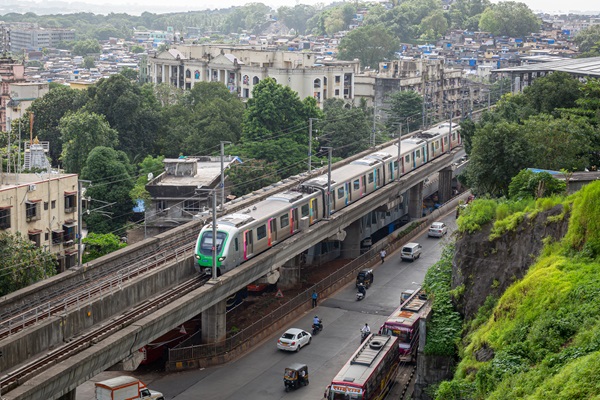.png)

Debashis Acharya, Professor at the University of Hyderabad, researches macroeconomics, monetary policy, and financial markets.
March 13, 2025 at 4:28 AM IST
Maharashtra’s 2025-26 budget, presented by Finance Minister Ajit Pawar, paints an optimistic picture of growth, investment, and employment. With an eye on long-term expansion, the government has prioritised capital investment in infrastructure, a move based on the economic principle that every rupee spent today could generate exponential returns in the future.
But will the numbers add up? With a fiscal deficit of ₹1.36 trillion and a projected gross state domestic product growth of 9%, Maharashtra’s ability to sustain its development ambitions while maintaining fiscal prudence remains a question mark.
The budget hinges on the assumption that a surge in investments will create employment and drive economic growth. The state’s new industrial policy targets ₹40 trillion in investments and 5 million new jobs. The logistics policy, covering 10,000 acres, aims to generate 500,000 jobs, while the Mumbai Metropolitan Region's economy is expected to reach $300 billion by 2030 and $1.5 trillion by 2047.
Other notable initiatives include the steel hub in Gadchiroli, mining highways, low-cost power supply, and an innovation city in Navi Mumbai. While the numbers are impressive, the challenge lies in execution.
Multiplier Effect
Maharashtra is betting on the well-established concept of fiscal multipliers to drive growth. Studies suggest that capital investment yields higher economic returns than revenue expenditure, as infrastructure development attracts private investment and stimulates consumption.
The budget speech says that every rupee spent on infrastructure could increase Maharashtra’s economic output by ₹2.5-₹3.5. The state has announced a slew of infrastructure projects, including the Vadhavan and Murbe ports, metro expansions, new airports, and a long-term road development programme. The key question is whether these investments will be executed efficiently to realise their full multiplier potential.
Historically, Maharashtra has been among the top states in infrastructure development, but delays and cost overruns have often diluted the intended impact. The Amritkal state road development plan 2025-2047 and metro rail projects, if completed on time, could transform connectivity, and unlock new economic corridors. However, the success of such mega projects will depend on transparent public-private partnerships, timely fund disbursal, and strict project monitoring.
Balancing Priorities
While the budget’s focus on infrastructure is clear, agriculture and social sector allocations reflect a mix of continuity and new initiatives. The government has earmarked ₹3.51 billion for agricultural sustainability projects and ₹5 billion for artificial intelligence in farming. Rural infrastructure, energy transition, and agribusiness projects feature prominently, but Maharashtra’s agrarian economy still faces long-standing structural issues.
The budget outlines ambitious plans, but their impact will depend on how effectively they address the concerns of small and marginal farmers.
On the social front, Maharashtra continues to allocate funds for welfare schemes, including ₹510 million under the Lek Ladki Yojana and targeted support for Bahujan, tribal, and OBC welfare. However, concerns persist about the adequacy of health and education spending. Maharashtra’s health expenditure remains at 4.3% of total spending, below the 5.7% average for major states.
The pandemic exposed weaknesses in Maharashtra’s healthcare infrastructure. The budget’s failure to significantly boost health allocations could leave the state vulnerable to future public health crises. Similarly, while education spending has increased, the focus must be on improving learning outcomes rather than just infrastructure expansion.
Debt Concerns
Maharashtra is among India’s fiscally healthier states, but there are underlying vulnerabilities. The state ranks among the front-runners in NITI Aayog’s Fiscal Health Index, with a stable debt-to-GSDP ratio and strong revenue mobilisation. However, the Fiscal Responsibility and Budget Management Act prescribes a fiscal deficit limit of 3.5%, and Maharashtra’s deficit of ₹1.36 trillion raises concerns about debt sustainability.
One of Maharashtra’s key strengths is its ability to generate revenue. Rising revenue receipts provide some cushion, but fiscal prudence will be crucial. The government must ensure that borrowings are directed towards productive sectors rather than recurring expenditure.
NITI Aayog’s FHI report finds that the state’s Committed Expenditure, as a percentage of Revenue Receipts, has decreased from 59.4% in 2021-22 to 54.64% in 2022-23. However, this figure has generally remained within the 50-60% range, limiting the availability of revenue resources for other purposes, including debt servicing.
A major risk is the quality of expenditure. The Fiscal Health Index notes that Maharashtra lags behind major states in the share of social and economic services in total spending. While infrastructure spending is critical, underinvestment in health and education could create long-term imbalances.
Delivery Vs Promises
Maharashtra’s budget lays out an ambitious roadmap, but execution will be the deciding factor. The government has signed memoranda of understanding with 63 companies at the World Economic Forum in Davos, alongside investment agreements for the Gadchiroli steel hub and infrastructure projects. However, past experience suggests that not all announced investments materialise as expected.
The state must prioritise ease of doing business, land acquisition reforms, and bureaucratic efficiency to attract and retain investors. Large infrastructure projects, such as the Murbe port and hydroelectric public-private partnership projects, need continuous monitoring to avoid cost escalations and delays.
A crucial test will be Maharashtra’s ability to mobilise central government assistance and leverage financing from multilateral agencies like the Asian Development Bank. The budget’s success hinges on effective coordination between government agencies and private sector players.
Road Ahead
Maharashtra’s 2025-26 budget presents a compelling vision for the state’s economic future. By focusing on infrastructure, investment, and job creation, the government aims to drive long-term growth. However, challenges remain in implementation, fiscal management, and sectoral balance.
If Maharashtra can successfully execute its ambitious plans while maintaining fiscal discipline, it could emerge as India’s premier growth engine. The real test will be whether the government can turn policy pronouncements into tangible results on the ground. In the coming years, Maharashtra’s ability to sustain momentum will determine whether its economic ambitions translate into reality.




